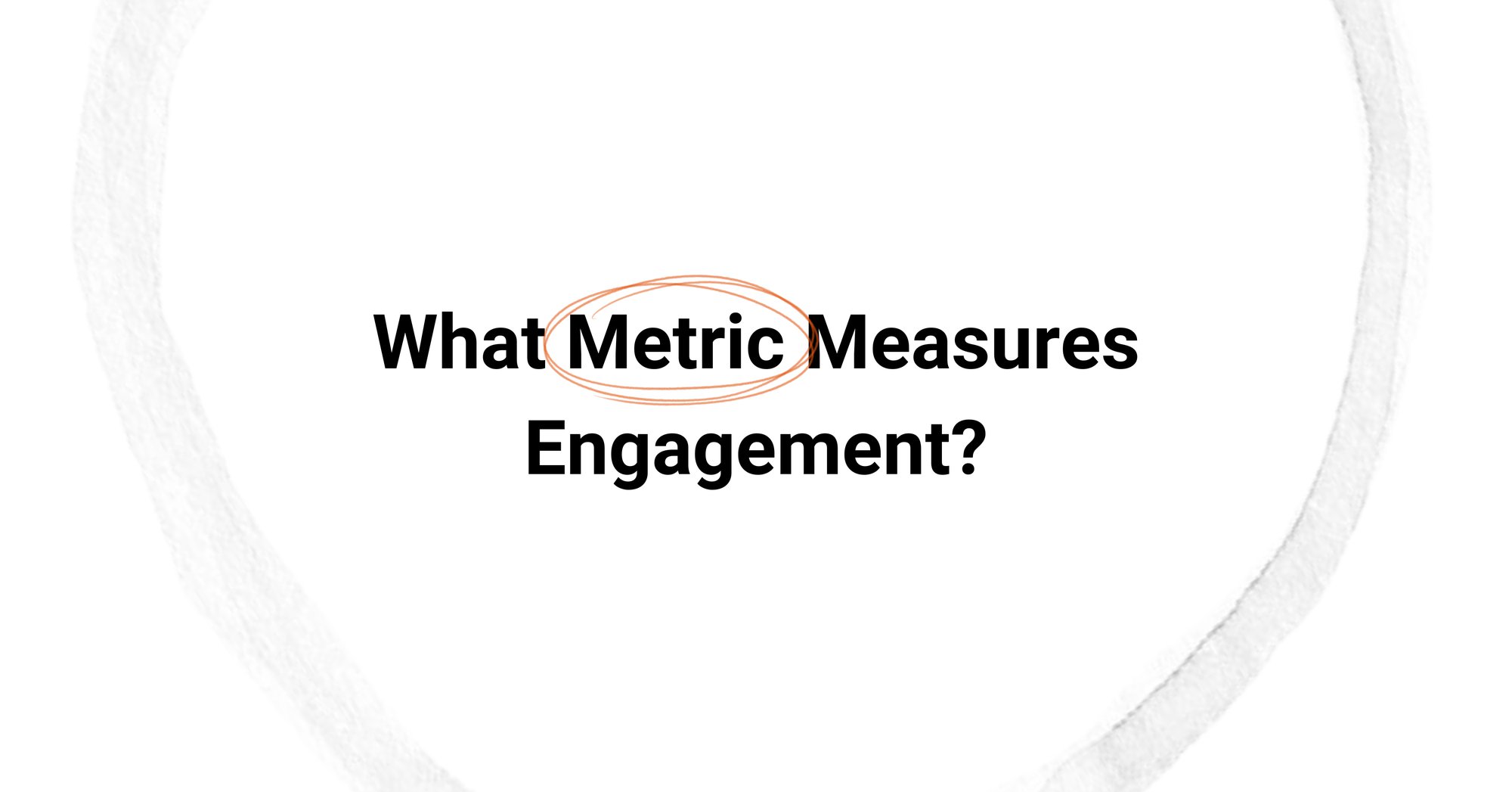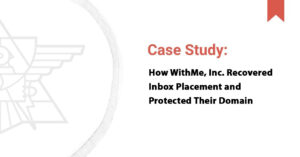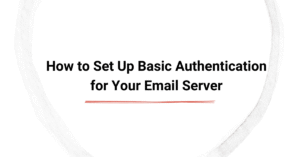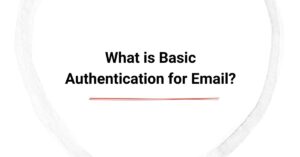What metric measures engagement? It’s a question every marketer asks, especially in a world flooded with endless emails, posts, and ads. Simply sending content isn’t enough anymore. You need to understand if your audience is really paying attention, interacting, and taking meaningful actions.
Engagement is what keeps your marketing alive, whether that’s through email, social media, or your website. But here’s the thing: engagement isn’t just one single metric. It shifts depending on where you’re measuring it and what you’re hoping to achieve, whether that’s building awareness, activating users, driving conversions, or keeping customers coming back.
In this article, we’ll go into what metric measures engagement most effectively, with a special spotlight on email marketing. We’ll also look at important metrics across other digital channels. You’ll get clear definitions of key performance indicators (KPIs), learn how to track them, and understand which engagement metrics make the most sense depending on your goals. By the end, you’ll have a clearer picture of your audience’s behavior and better tools to boost your email engagement metrics and overall user engagement.

What Does “Engagement” Mean in Digital Marketing?
In digital marketing, engagement refers to how actively users interact with your content, emails, or platform, essentially measuring user interactions beyond simple exposure. Engagement is a step beyond visibility—it’s the difference between a passive viewer and an interested participant. Engaged users are those who not only see your content but actively interact with it, indicating genuine interest and potential loyalty.
For digital marketers, tracking engagement is crucial because it signals user interest and intent. Without engagement, your message is lost in the noise, and your company’s campaigns deliver little value. High engagement rates indicate that your content resonates with your audience, your calls to action (CTAs) are compelling, and your messaging is relevant. Often, strong engagement is also supported by direct user feedback, which helps validate whether your messaging and content strategy are on point.
When engagement is low, it can suggest a range of issues, from poor targeting or content mismatch to deliverability problems in email campaigns. This makes engagement metrics valuable diagnostics tools as well as measures of success.
While engagement can be measured differently on various platforms, common themes emerge: clicks, opens, conversions, time spent, and interaction rates. Understanding what metric measures engagement helps marketers focus on the right signals.
What Metric Measures Engagement?
The question “What metric measures engagement?” doesn’t have a universal answer—it depends on the channel and goals. Below, we break down the top metrics used in email marketing, since it’s one of the most direct and measurable channels, and also touch on other digital engagement measures.
Top Metrics That Measure Engagement in Email Marketing
Measuring engagement in email marketing involves looking at several key indicators that reveal how recipients interact with your messages. These metrics help you understand both the initial interest and deeper involvement with your content.
Open Rate
Open rate is one of the oldest and most common email metrics, representing the percentage of recipients who open your email. It provides a quick snapshot of how well your subject lines perform and how many recipients are interested enough to take the first step.
However, open rate has become less reliable recently due to privacy updates like Apple Mail Privacy Protection, which can block tracking pixels. This means open rate can overstate engagement by counting unopened emails or undercount by missing opens.
Use open rate primarily for testing subject lines and improving deliverability, but avoid relying on it exclusively to measure engagement.
Click-Through Rate (CTR)
CTR measures the percentage of recipients who clicked on at least one link inside your email. Unlike open rate, it reflects active engagement with your content rather than just curiosity about the subject line.
CTR is a strong indicator of content relevance and the effectiveness of your CTAs. If your CTR is low, it’s a sign your email body, links, or offers may need improvement.
Marketers often use CTR to gauge how well their email content drives users deeper into the sales funnel or website.
Click-to-Open Rate (CTOR)
CTOR measures the ratio of clicks to opens—essentially, how many people clicked after they actually opened the email. This is often considered the best single email engagement metric because it filters out accidental or unintentional opens and focuses on genuine interest.
A high CTOR signals that your content and design engage readers who opened the email, whereas a low CTOR might indicate that your email copy or CTAs need refining.
Reply Rate
Reply rate is less common in mass marketing emails but crucial in personalized outreach, onboarding, or customer success campaigns. It tracks the percentage of recipients who respond directly to your email.
In B2B or service-based businesses, a high reply rate signals strong intent and provides opportunities for direct conversation and relationship-building. This direct communication is key to strengthening the customer relationship and fostering loyalty.
Conversion Rate
Conversion rate is the percentage of recipients who complete a desired action, such as making a purchase, signing up, or downloading a resource. This is the ultimate measure of engagement when your goal is revenue or lead generation.
Tracking conversion rates helps connect email performance to real business outcomes, making it invaluable for ROI analysis.
Engagement Metrics Beyond Email
While email engagement metrics are critical, many marketers ask what metric measures engagement more broadly across digital channels. Let’s look at other key metrics outside of email marketing.
Website Metrics
On websites, engagement isn’t just about clicks. It’s about how users interact with your content and navigate your site.
- Time on Page: Indicates how long a visitor stays on a page, suggesting interest and content consumption.
- Bounce Rate: The percentage of visitors who leave without interacting or visiting other pages. A high bounce rate can signal irrelevant content or poor user experience.
- Pages per Session: Measures how deeply visitors explore your site, which correlates with engagement and interest.
- Scroll Depth: Tracks how far down a page visitors scroll, showing content consumption beyond the initial visible area.
Social Media Metrics
Social platforms measure engagement through a variety of interactions:
- Likes, Comments, Shares: These indicate surface-level interest and social resonance.
- Engagement Rate: Calculated as interactions divided by total followers or impressions, this metric standardizes engagement for audience size.
- Watch Time: Especially for video content, the amount of time viewers spend watching is a strong engagement indicator on platforms like YouTube and LinkedIn.
How to Choose the Right Engagement Metric for Your Goal
Different marketing goals require different metrics to measure success. Here’s a simple guide to help you select the right engagement metric based on your objective:
| Goal | Recommended Metrics |
|---|---|
| Brand Awareness | Open rate, impressions, reach |
| Traffic Generation | CTR, bounce rate, time on page |
| Lead Nurturing | CTOR, reply rate, scroll depth |
| Conversions & Sales | Conversion rate, click-to-sale ratio |
| Customer Retention | Email engagement over time, reactivation rates |
Understanding your goal is a must before making a decision what metric measures engagement effectively in your context. Aligning engagement metrics with clear business goals ensures your efforts deliver measurable impact.
How to Improve Engagement Metrics
Once you know what metric measures engagement for your campaign, the next step is optimizing those numbers. Here are proven strategies to boost engagement:
Segment Your Audience
Sending generic emails to your entire list is a missed opportunity. By segmenting based on user behavior, demographics, or lifecycle stage, you can tailor your messages and increase relevance. Targeted emails see higher opens, CTR, and conversions.
A/B Test Subject Lines and CTAs
Small variations in subject lines, email length, or CTA wording can significantly impact engagement. Running A/B tests allows you to identify what resonates best and iteratively improve performance.
Use Personalized Content
Personalization goes beyond adding a first name. Use dynamic content blocks, product recommendations, and user-specific offers to deepen engagement. These tactics not only boost immediate engagement but also improve your customer retention rate over time.
Optimize Email Timing
Send emails when your audience is most active. Testing different send times can increase open rates and email engagement overall.
Clean Your List Regularly
Remove inactive or unengaged contacts to maintain sender reputation and improve deliverability, which directly impacts engagement metrics like open rate and CTR.
Common Mistakes in Measuring Engagement
Even experienced marketers can fall into traps when interpreting engagement metrics. Understanding these common pitfalls will help you avoid misleading conclusions and improve your overall strategy.
Relying Solely on Open Rate
Due to recent privacy changes and tracking limitations, open rate alone no longer gives an accurate picture of engagement. Always pair open rate with CTR or CTOR for a more complete view.
Ignoring Negative Engagement Metrics
Low CTR, high bounce rate, unsubscribes, and spam complaints provide valuable feedback. Ignoring these signals can lead to deteriorating list health and wasted budget.
Conclusion
What metric measures engagement? The honest answer is, it depends on your marketing channel and goal. For email marketers, click-to-open rate (CTOR) often provides the clearest insight into true user interest. Meanwhile, CTR, conversion rates, reply rates, and other behavioral metrics offer important context.
In broader digital marketing, engagement is multi-channeled and requires tracking various indicators like time on page, bounce rate, and social interactions. The best approach is to combine multiple metrics to understand user behavior fully.
Strong engagement means your content aligns with your audience, your campaigns deliver value, and your brand builds trust. Achieving these outcomes is essential for sustained business success in today’s competitive digital landscape.
Want help tracking and improving your engagement metrics?
Book a strategy session with Email Industries to uncover which metrics matter most for your business.









